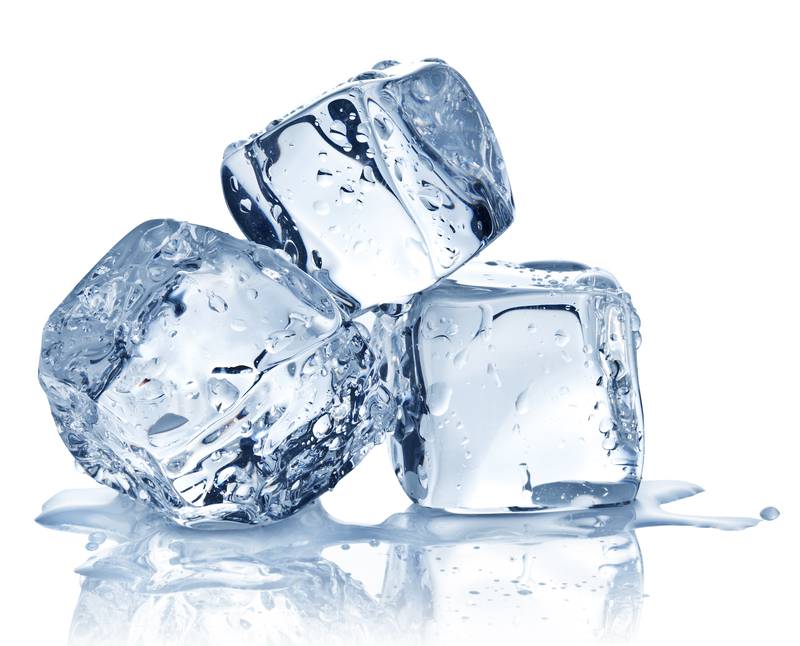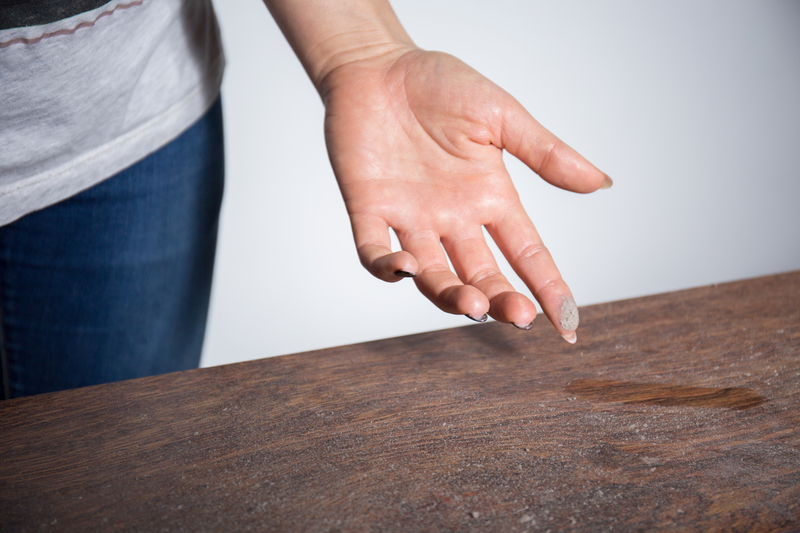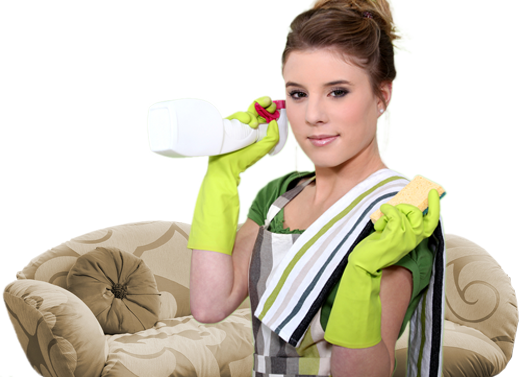Say goodbye to dirty curtains with our cleaning guide
Posted on 29/08/2025
Say Goodbye to Dirty Curtains with Our Cleaning Guide
Are dingy, dust-laden curtains weighing down your home's appearance? Say goodbye to dirty curtains and refresh any space with our comprehensive cleaning guide. These essential tips, methods, and secrets will help you revitalize window dressings--no matter the fabric or style. Discover how to prolong curtain longevity, enhance indoor air quality, and transform your living environment with sparkling-clean window treatments.

Why Cleaning Curtains Matters
Curtains are more than decorative; they're crucial for maintaining a comfortable, healthy home. Over time, they collect dust, allergens, smoke, pet dander, and even mold spores--everything circulating indoors can settle onto the fabric. Regular curtain cleaning not only improves air quality but also prolongs the life of your drapes and blinds, and keeps your rooms looking neat and well-maintained.
- Enhanced Aesthetics: Fresh curtains instantly brighten a room.
- Reduced Allergens: Lower risk of allergic reactions and respiratory issues by removing dust and mold.
- Longer Curtain Life: Prevent fabric deterioration and discoloration.
- Improved Odor Control: Get rid of lingering cooking smells, smoke, or pet odors trapped in fabrics.
Different Types of Curtain Fabrics
Before starting any deep clean, identify your curtain fabric. Each material requires a slightly different touch to ensure safe and effective cleaning. Here are some of the most popular curtain fabrics:
- Cotton: Easy to wash and maintain; can often handle machine washing.
- Polyester: Durable, budget-friendly, and generally machine-washable with care.
- Linen: Natural, breathable, but can shrink; often best cleaned by hand or dry cleaner.
- Silk: Delicate, luxury fabric that typically needs professional cleaning.
- Velvet: Thick, luxurious, susceptible to water marks; respond well to steam or dry cleaning.
- Sheer and Voile: Lightweight, can snag easily. Gentle washing recommended.
Check Manufacturer's Labels First
Always read the care labels before cleaning your curtains. Manufacturer instructions often tell you whether the curtain is safe for machine washing, requires dry cleaning, or can be hand washed. Ignoring care tags may result in shrinkage, color fading, or damage--turning your curtain cleaning mission into a costly mistake.
The Ultimate Step-by-Step Curtain Cleaning Guide
1. Remove and Prepare Your Curtains
- Take curtains down carefully: Avoid pulling or snagging. Remove all hooks, rings, and hardware.
- Shake vigorously outdoors: This removes loose dirt, dust, and allergens. It also prevents excess grime from transferring to your washing machine or cleaning water.
- Vacuum: Use a hand-held vacuum or the upholstery attachment to gently vacuum fabric, paying special attention to pleats and folds.
2. Spot Clean Stains First
- Prepare a gentle cleaning solution: Mix mild liquid detergent with lukewarm water.
- Dab, don't rub: Use a soft cloth or sponge to blot stains--never scrub vigorously, as this can damage fibers or set stains.
- Rinse with clean water and blot dry with towels.
3. Pick Your Cleaning Method
Machine Washing Curtains
*Most polyester and cotton curtains are machine-washable.*
- Cold water, gentle cycle: Protect delicate fibers by using cold water and a mild detergent.
- Wash curtains alone: Prevent tangling or color transfer by not overloading the washing machine.
- Skip the spin dryer: Excessive spinning can crease or wrinkle fabric--air drying is often safer.
- Iron damp: For wrinkle-free results, iron curtains while slightly damp using appropriate heat settings for the fabric.
Hand Washing Curtains
*Linen, lace, and delicate sheers often need handwashing.*
- Fill a clean tub or basin: Use lukewarm water and gentle detergent.
- Gently agitate: Swirl curtains without twisting or wringing, which can tear delicate material.
- Rinse thoroughly: To avoid detergent residues, rinse curtains several times in cold water.
- Press out water: Lay curtains flat between clean towels and press (don't wring!) to remove excess moisture.
Steam Cleaning Curtains
*Velvets and heavy draperies benefit from steam cleaning.*
- Use an at-home garment steamer or a professional-grade curtain steamer.
- While hanging: Steam from top to bottom, ensuring even coverage for consistent cleaning and wrinkle removal.
- Check for moisture: Allow time to air dry if curtains become damp.
Dry Cleaning Curtains
*Silk, brocade, or curtains labeled "dry clean only" should never be immersed in water.*
- Trust professional cleaners: Specialized solvents and processes prevent water damage, shrinkage, and color bleeding.
- Remove accessories: Take down hooks, trims, and rings before cleaning.
- Request gentle treatment: Ensure your curtains aren't placed with heavy items to avoid imprinting or creasing.
4. Drying Your Curtains Properly
- Line Dry Outdoors: Sunlight helps to naturally bleach and freshen curtains, but avoid overexposure to prevent fading.
- Hang Indoors: Hang your curtains back up at the window to finish drying; the weight can help pull out wrinkles.
- Tumble Dry: Only if the care label allows, use a low-heat setting and remove while still slightly damp to minimize creases.
Special Tips For Curtain Cleaning Success
- Test First: Always spot-test a small, inconspicuous area with any cleaning solution.
- Regular Maintenance: Lightly vacuum or shake curtains weekly to prevent dust buildup and reduce the frequency of deep cleaning.
- Mind the Hardware: Clean rods, tracks, and finials regularly to avoid transferring grime to fresh curtains.
- Layered Curtains: Separate liners and drapes when cleaning for more effective results.
- Odor Control: Use fabric fresheners or steam for a quick refresh between deeper cleans.
Cleaning Blinds and Shades: Don't Overlook
Many homes pair curtains with blinds or window shades, which can be magnets for dust and grime. Always clean blinds or shades alongside your drapes to keep the whole window area sparkling. Use a microfiber cloth, gentle soap solution, or even a vacuum attachment designed specifically for blinds.
How Often Should I Clean My Curtains?
The ideal frequency depends on your living environment and allergies. In general:
- Seasonal Deep Cleaning: Aim for every 3-6 months.
- Regular Dusting: Weekly or bi-weekly vacuuming or shaking suffices for most homes.
- Allergy Sufferers or Smokers: Clean more often to reduce irritants.
- Pet Owners: Increase frequency if pets brush against curtains or shed frequently.
Prevent Curtain Dirt and Odor: Proactive Measures
While you can't stop dust from settling, there are proactive steps to keep curtains cleaner for longer and extend the time between deep cleans:
- Use an Air Purifier: Minimize airborne particles near windows.
- Keep Windows Closed: On windy or pollen-rich days, keep windows shut to reduce dust blows.
- Regular Grooming for Pets: Controls dander and loose hair that can stick to fabric.
- Avoid Smoking Indoors: Smoke clings to textiles and can permanently discolor and scent curtains.
- Rotate Curtains: Change your drapes between rooms seasonally to even out wear and exposure.

Frequently Asked Questions:
Can I machine wash all types of curtains?
No--delicate fabrics like silk, some linens, and any curtain labeled "Dry Clean Only" should not be machine washed. Always follow manufacturer care advice first.
Should I iron my curtains after washing?
It depends on the material. Many curtains are best ironed while still a little damp, smoothing out wrinkles without the risk of scorch marks. For synthetics or sheers, use low heat. Velvet and some blackout curtains do not require ironing--just a gentle shake after re-hanging can suffice.
Are there alternatives if I don't want to take down my curtains?
Yes! Vacuuming, spot cleaning, and steam cleaning can be done while curtains are hanging. However, periodic removal and washing or dry cleaning are still essential for thorough cleanliness.
How do I remove stubborn odors from curtains?
After cleaning, hang curtains outdoors for a few hours if possible. For persistent smells, sprinkle with a light baking soda dusting, wait 30 minutes, and then shake or vacuum. Some fabric sprays also help neutralize odors.
Can curtain cleaning improve my home's energy efficiency?
Yes! Dusty, grimy curtains can block light and even trap humidity, affecting indoor temperature and airflow. Clean, well-maintained window dressings help regulate sunlight and insulation more effectively.
Conclusion: Transform Your Home--Say Goodbye to Dirty Curtains Forever!
Don't let dirty curtains detract from your living space's beauty or your family's well-being. With the right care techniques, regular maintenance schedule, and our cleaning guide, you'll always enjoy fresh, vibrant, and inviting window dressings. Say goodbye to dirty curtains for good and embrace a cleaner, healthier, and more welcoming home today!
If you found these tips helpful, bookmark this cleaning guide for all your curtain care needs. Share with friends or family, and enjoy the light, freshness, and style well-kept curtains can bring to every room.




